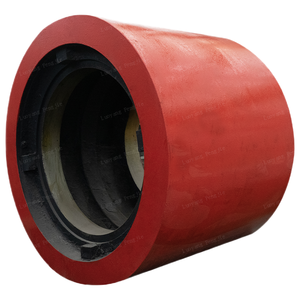Writing an excavation report is a critical task for mechanical engineers involved in construction, infrastructure, or geotechnical projects. This document serves as a formal record of excavation activities, ensuring compliance with safety standards, regulatory requirements, and project specifications. A well-structured excavation report provides clarity, mitigates risks, and supports decision-making for future phases of the project. Below is a step-by-step guide to drafting a professional excavation report.
(how to write an excavation report)
**1. Introduction and Project Overview**
Begin the report with a concise introduction outlining the purpose, scope, and objectives of the excavation. Specify the project name, location, client, and relevant dates. Include a brief description of the excavation’s role within the broader project, such as foundation preparation, utility installation, or site remediation. This section sets the context for stakeholders and reviewers.
**2. Site Description and Geotechnical Data**
Detail the physical characteristics of the excavation site. Describe the dimensions (length, width, depth), soil types, and geological conditions encountered. Reference geotechnical investigations, such as borehole logs, soil resistivity tests, or lab analyses of soil samples. Include diagrams or cross-sectional sketches if available, though these may be appended. Highlight any pre-existing structures, underground utilities, or environmental constraints that influenced excavation methods.
**3. Methodology and Execution**
Explain the techniques, equipment, and procedures employed during excavation. Specify machinery used (e.g., backhoes, excavators, or trenchers) and their specifications. Discuss soil handling practices, such as stockpiling, hauling, or disposal. Address safety protocols, including shoring, sloping, or shielding systems to prevent trench collapses. Mention adherence to OSHA standards or other regional regulations. If dewatering was necessary due to groundwater, describe the systems implemented.
**4. Observations and Findings**
Document field observations made during excavation. Note unexpected conditions, such as unmarked utilities, unstable soil strata, or water ingress. Record measurements, including final excavation dimensions, slopes, and elevations. Include photographs with timestamps to visually validate critical stages or anomalies. This section should objectively present facts without interpretation.
**5. Analysis and Risk Assessment**
Evaluate the excavation’s compliance with design plans and safety requirements. Assess soil stability, slope angles, and the effectiveness of protective measures. Identify potential hazards, such as soil liquefaction or equipment-related risks, and explain how they were mitigated. If deviations from the original plan occurred, justify them with technical reasoning (e.g., soil inconsistency necessitating design adjustments).
**6. Conclusions and Recommendations**
Summarize the overall success of the excavation and its readiness for subsequent construction phases. Highlight lessons learned, such as improved soil-testing protocols or equipment selection. Provide actionable recommendations for future excavations, such as enhanced site surveys or modified shoring techniques. Emphasize steps to avoid recurring issues.
**7. Appendices and Supporting Documents**
Attach supplementary materials, including soil test reports, permits, equipment logs, and safety inspection records. Include signed approvals from engineers or regulatory bodies. Ensure all references are clearly labeled for easy cross-referencing.
**8. Review and Compliance**
Before finalizing, verify that the report aligns with organizational templates, legal standards, and client expectations. Ensure technical terminology is consistent and data is accurate. A peer review by a senior engineer is advisable to eliminate errors and enhance credibility.
(how to write an excavation report)
In conclusion, an excavation report must be thorough, precise, and methodically organized. It serves as both a legal document and a technical reference, underscoring the engineer’s responsibility for safety and quality. By adhering to this structure, mechanical engineers can produce reports that uphold professional standards, facilitate project continuity, and safeguard stakeholder interests.


